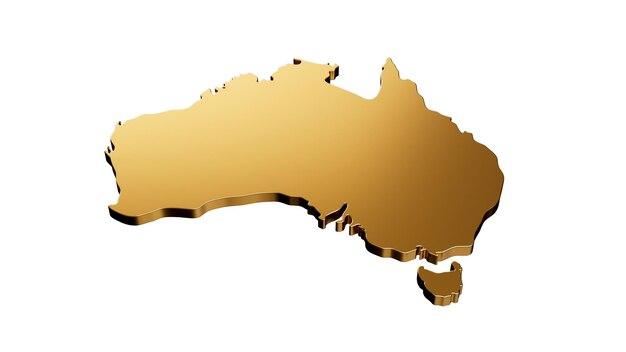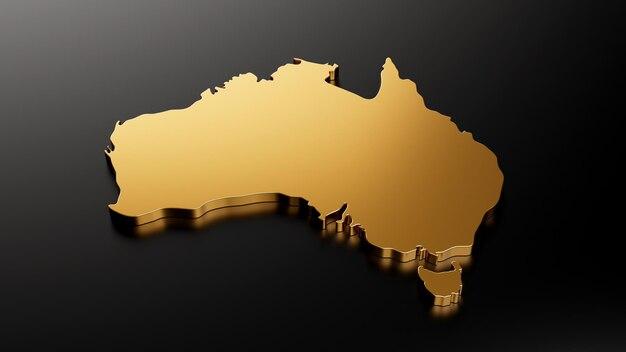The year is 2023, and today we’re diving deep into the fascinating historical event known as the Gold Rush. But we’re not headed to the famous goldfields of California or the wild west of the United States—instead, we’re venturing down under to Australia. The Australian Gold Rush, which took place in the mid-19th century, brought about significant changes to the country, transforming its social fabric in ways that continue to shape its identity today.
In this blog post, we’ll explore the social impact of the Gold Rush on Australia. We’ll discuss how this event affected people’s lives, examine its political implications, and even touch upon its connections to the American Civil War. So grab your virtual pickaxe, put on your historian’s hat, and let’s uncover the remarkable story of how the Gold Rush shaped Australia.

What Social Impact Did the Gold Rush Have on Australia
Gold Rushes have long been associated with overnight fortunes, the uncovering of hidden treasures, and a wave of excitement that sweeps across nations. One such historical event that had a significant influence on Australia was the Gold Rush of the 1850s. Beyond the glittering nuggets and the wild tales of prospectors, the Gold Rush left an indelible mark on the social fabric of Australia. Let’s delve into the social impact of this transformative period:
1. Population Boom: Changing the Face of Australia
The Gold Rush brought a colossal surge in population to Australia. Waves of eager gold seekers flocked to the shores in search of fleeting wealth. This influx of fortune hunters, commonly known as “diggers,” had a profound effect on the composition of Australian society. People from diverse backgrounds—Europeans, Americans, Chinese, and more—merged together in pursuit of gold, creating a melting pot of cultures and languages.
2. Transformation of Settlements: From Camps to Cities
Gold discoveries sparked the rapid transformation of small settlements into bustling cities. Regions like Ballarat and Bendigo in Victoria grew rapidly, mushrooming from rudimentary camps into thriving urban centers. Infrastructure development skyrocketed as these newfound settlements required essential amenities to support the growing population. From schools and hospitals to theaters and financial institutions, the Gold Rush propelled Australia’s urban development on an unprecedented scale.
3. Diversity and Conflict: A Clash of Cultures
The arrival of Chinese miners during the Gold Rush led to a clash of cultures and a rise in racial tensions. Anti-Chinese sentiment began to grow as the local population expressed fears of economic competition and cultural differences. This culminated in the imposition of discriminatory laws, such as the Chinese Immigration Act of 1855, which aimed to restrict the number of Chinese immigrants entering Australia. These tensions highlight the complex social dynamics that arose due to the Gold Rush and its impact on intercultural relationships.
4. Gendered Inequalities: Women in the Gold Rush Era
The Gold Rush era also witnessed significant gendered inequalities. While men predominantly formed the bulk of the “digger” population, women played crucial roles in this transformative period as well. Many women, often accompanied by their husbands or family, joined the goldfields. Despite their contributions and hardships endured, women faced numerous challenges, including limited access to property rights and political representation. However, their presence marked a shift towards gender diversity in Australian society and set the stage for further advancements in women’s rights.
5. Economic Impacts: Beyond Gold
Although the Gold Rush was primarily driven by the pursuit of gold, its economic impact rippled far beyond the glittering metal. The influx of wealth fostered the growth of various industries, such as agriculture, manufacturing, and services, fuelling broader economic development. The newfound prosperity stimulated infrastructure projects, employment opportunities, and trade, setting foundations for Australia’s future economic growth.
6. Environmental Consequences: A Legacy of Destruction
While the social and economic impacts of the Gold Rush were substantial, it also left an enduring environmental legacy. The relentless pursuit of gold took a toll on the natural landscape. Rivers were diverted, forests were cleared, and soil was disrupted, resulting in widespread environmental damage. This serves as a reminder of the delicate balance between human aspirations and the preservation of the environment.
In conclusion, the Gold Rush of the 1850s transformed Australia socially, economically, and environmentally. It brought together diverse cultures, fueled urban development, and contributed to Australia’s economic growth. However, it also gave rise to tensions, inequality, and environmental degradation. Recognizing and understanding the social impact of the Gold Rush provides valuable insights into the historical dynamics that continue to shape Australia in the present day.

FAQ: What Social Impact Did the Gold Rush Have on Australia
Table of Contents
- Introduction
- FAQ
- Was the Civil War fought in California?
- What did the 49ers eat during the Gold Rush?
- Who led the American troops in the West?
- Why did the gold rush create a new crisis over slavery?
- How did the Gold Rush change people’s lives?
- How did California lead to the Civil War?
- What political impact did the Gold Rush have?
- What was California’s position on slavery?
- How did the Civil War change the West?
- How much was gold worth during the gold rush?
- Where did the 49ers come from during the Gold Rush?
- Did California exist during the Civil War?
- What side was Oregon on during the Civil War?
- What social impact did the Gold Rush have on Australia?
- Did Western states fight in the Civil War?
- Who won the battle of the West?
- Was the Gold Rush good or bad?
Welcome to our comprehensive FAQ guide on the social impact of the gold rush in Australia. Here, we’ll explore various questions and shed light on the fascinating connections between the gold rush, California, and the Civil War. So, let’s dig into the glittering world of history and discover how these events shaped the West.
FAQ
Was the Civil War fought in California
No, the Civil War was not fought in California. However, the state played a significant role in the lead-up to the conflict and the war’s overall narrative.
What did the 49ers eat during the Gold Rush
The 49ers, as the gold prospectors were called, had quite an interesting diet during the Gold Rush. Their meals mainly consisted of beans, bacon, beef, dried fruit, biscuits, and coffee. Though simple, these provisions provided sustenance during their rugged pursuits.
Who led the American troops in the West
During the Gold Rush era, several military leaders commanded American troops in the West, including Stephen W. Kearny, John C. Frémont, and Kit Carson. These individuals played pivotal roles in the expansion and settlement of the region.
Why did the gold rush create a new crisis over slavery
The gold rush created a new crisis over slavery because as people flocked to California in search of gold, the question of whether the state would be admitted to the Union as a free or slave state became a contentious issue, further fueling tensions between the North and South.
How did the Gold Rush change people’s lives
The Gold Rush had a profound impact on people’s lives. It triggered mass migration, transforming the demographics of California and other regions. It also led to economic growth, fueled technological advancements, and spurred the development of infrastructures such as roads and towns.
How did California lead to the Civil War
California’s entry into the Union as a free state in 1850 drew a line in the sand between the North and the South on the issue of slavery. This, along with other factors, escalated tensions and ultimately contributed to the outbreak of the Civil War.
What political impact did the Gold Rush have
The Gold Rush had a significant political impact. It prompted debates over the expansion of slavery, influenced the outcomes of elections, and accelerated the process of admitting new states into the Union. It also contributed to the rise of political leaders who shaped America’s future.
What was California’s position on slavery
California, as a free state, was against the institution of slavery. The state’s entry into the Union played a role in tipping the delicate balance between free and slave states, further aggravating the divide that led to the Civil War.
How did the Civil War change the West
The Civil War brought about significant changes in the West. It redirected focus and resources from westward expansion to the war effort, temporarily slowing down development. It also led to the establishment of military installations and increased tensions between settlers and Native American tribes.
How much was gold worth during the gold rush
During the gold rush, gold had varying levels of worth. Initially, an ounce of gold could be exchanged for around $20, but as gold became more abundant, its value fluctuated. At its peak, an ounce of gold reached approximately $35, bringing newfound wealth to many miners.
Where did the 49ers come from during the Gold Rush
The 49ers, hailing from diverse backgrounds, came from various parts of the world. Many immigrants journeyed from countries such as China, Mexico, Europe, and South America, seeking their fortune in the gold fields of California.
Did California exist during the Civil War
Yes, California did exist as a state during the Civil War. It joined the Union in 1850, becoming the 31st state, and played a part in the broader conflict, albeit indirectly.
What side was Oregon on during the Civil War
Oregon, like California, was a free state and aligned with the Union during the Civil War. Though geographically distant from the main theaters of conflict, the state contributed troops and resources to the Union cause.
What social impact did the Gold Rush have on Australia
The Gold Rush had a profound social impact on Australia. Thousands of people left their homes in search of gold, causing population growth, urbanization, and the development of mining towns. This influx of people from different cultures shaped Australia’s multicultural identity and laid the foundation for future prosperity.
Did Western states fight in the Civil War
Yes, some Western states, such as California and Oregon, participated in the Civil War. While their involvement was not as prominent as states closer to the conflict’s epicenter, they still played a role, both in supplying troops and contributing resources.
Who won the battle of the West
The battle of the West was a complex and ongoing struggle, so attributing a clear-cut victory to one side is challenging. However, the expanded influence of the Union over the Western territories, as well as their victory in the Civil War overall, cemented their control and shaped the destiny of the West.
Was the gold rush good or bad
The gold rush had both positive and negative consequences. While it brought newfound wealth and opportunities for some, it also had detrimental effects on the environment, led to the displacement of Native American tribes, and exacerbated social inequalities. Its legacy is a reminder of the complexities and lasting impacts of historical events.
Thank you for exploring this FAQ guide on the social impact of the gold rush in Australia. We hope you found the answers to your questions informative and engaging. If you have any further queries, feel free to leave a comment below. Happy prospecting, mates!
